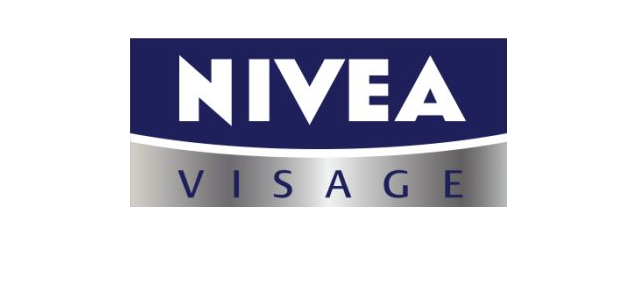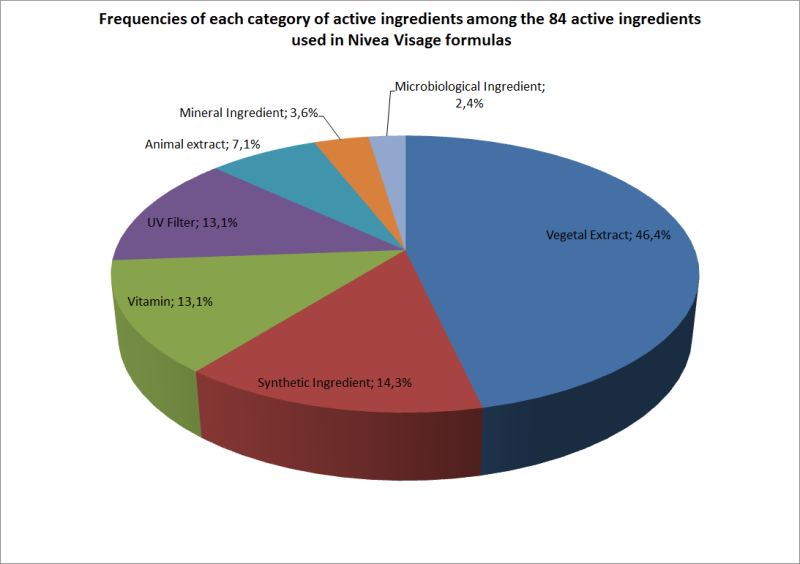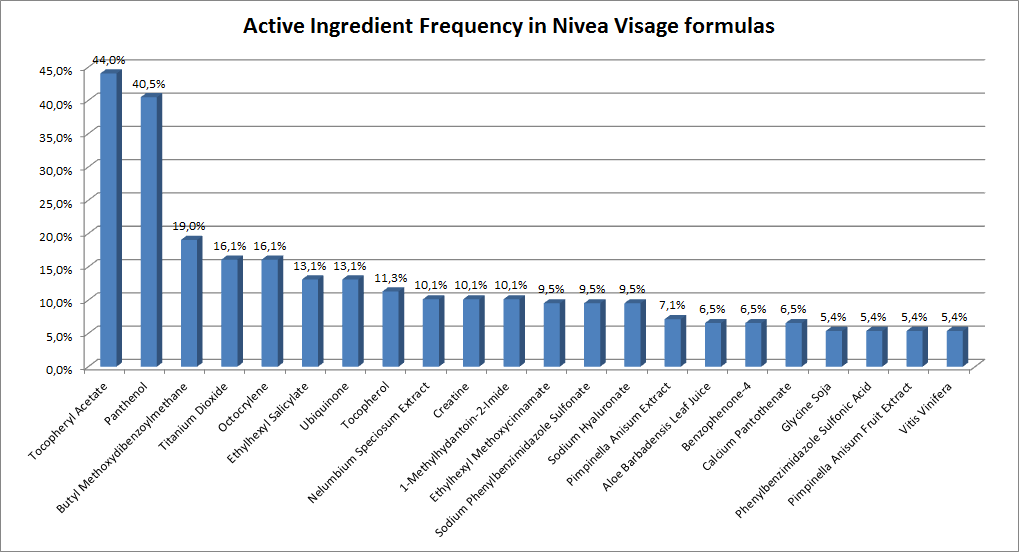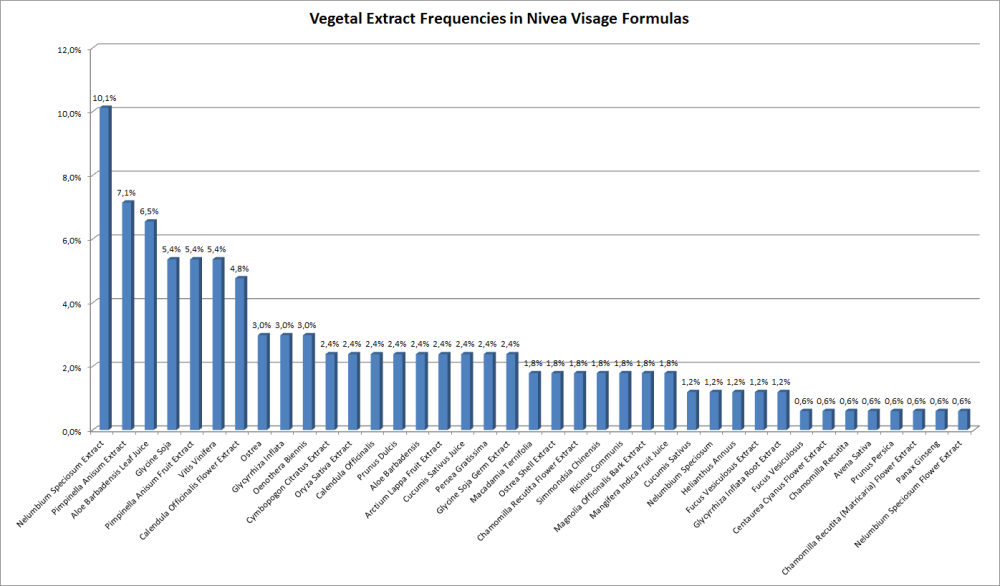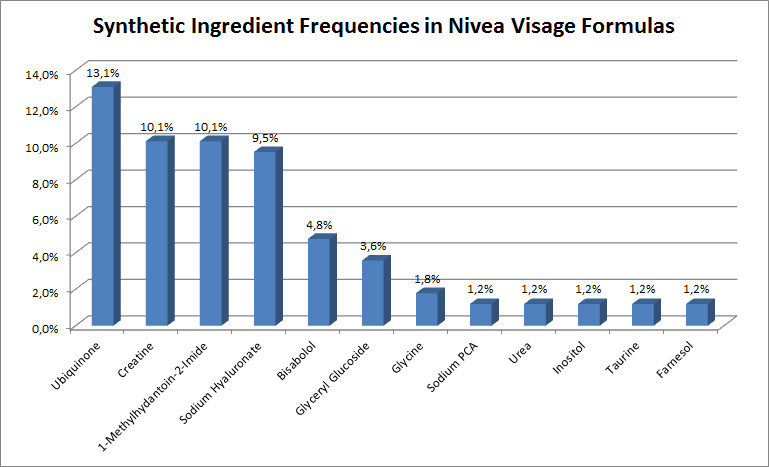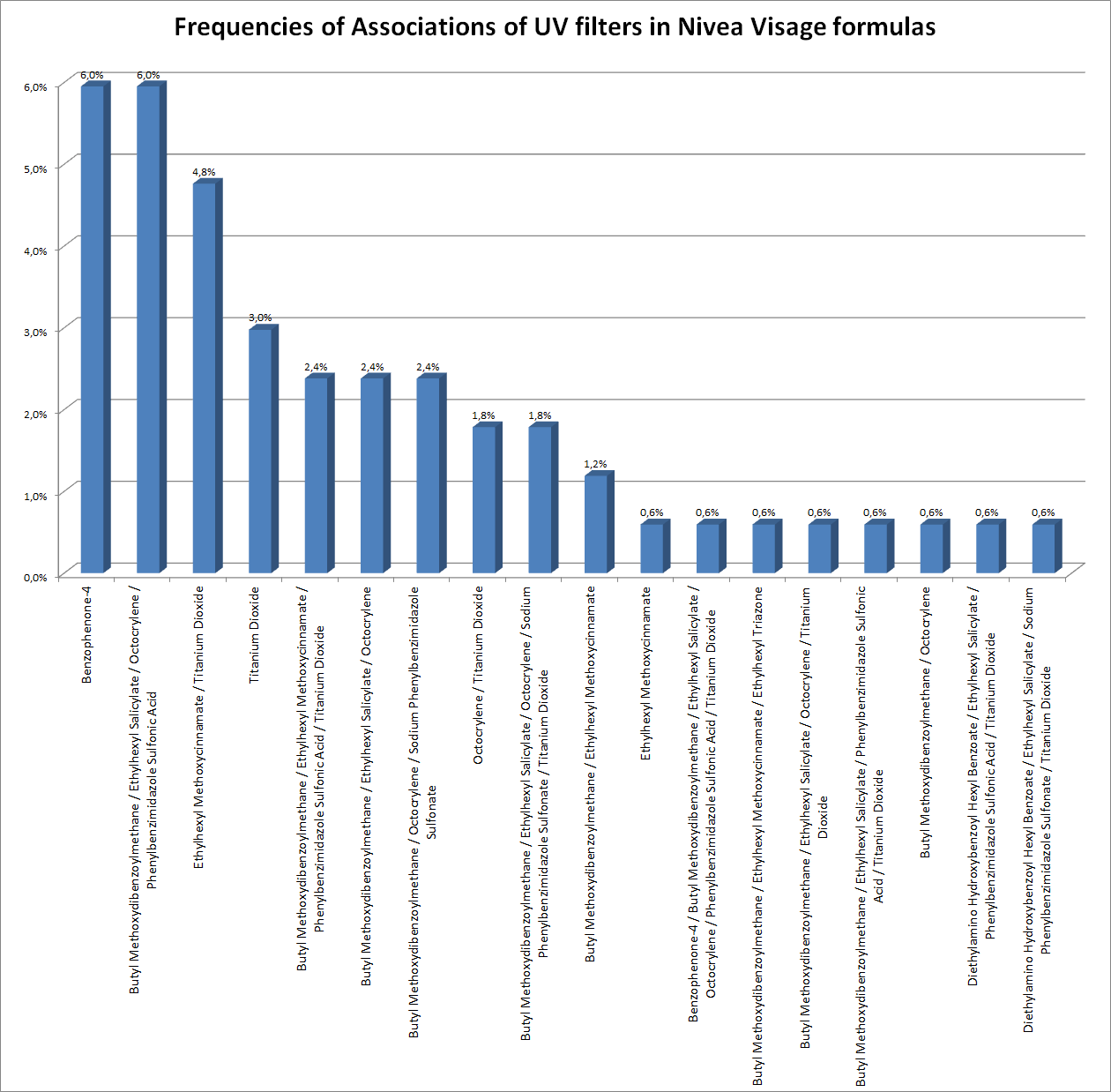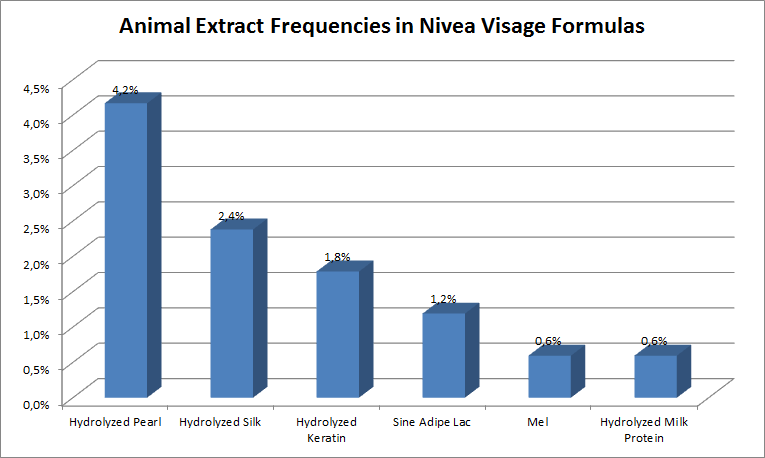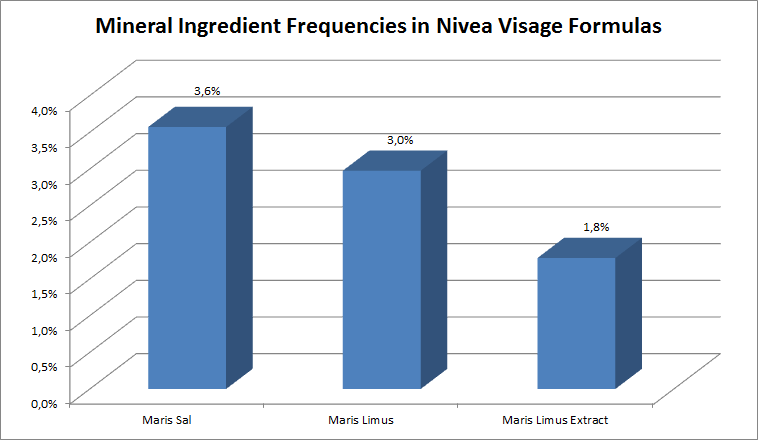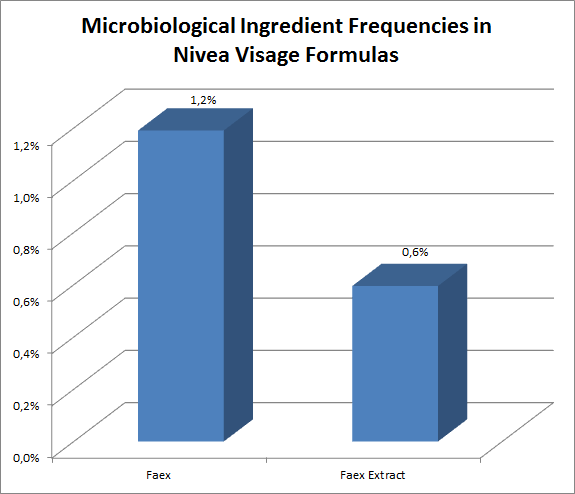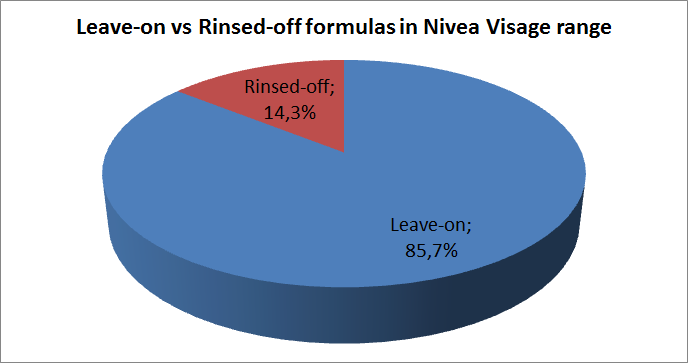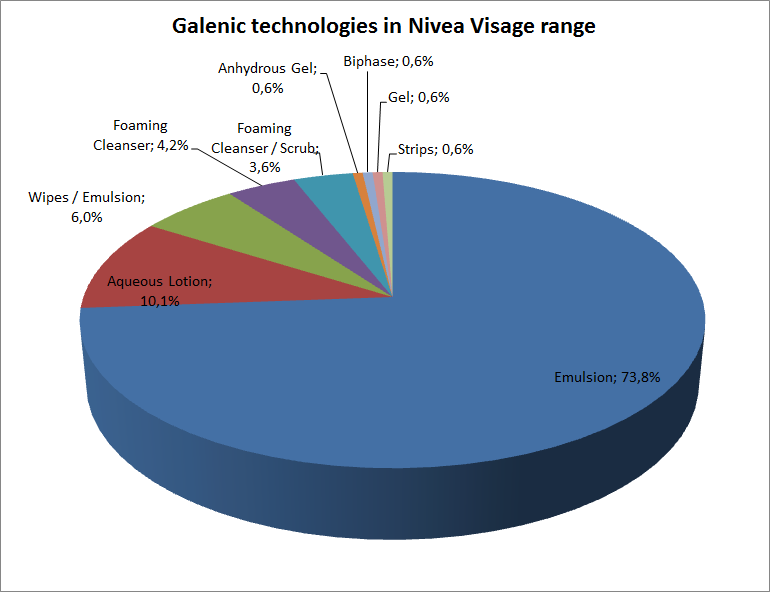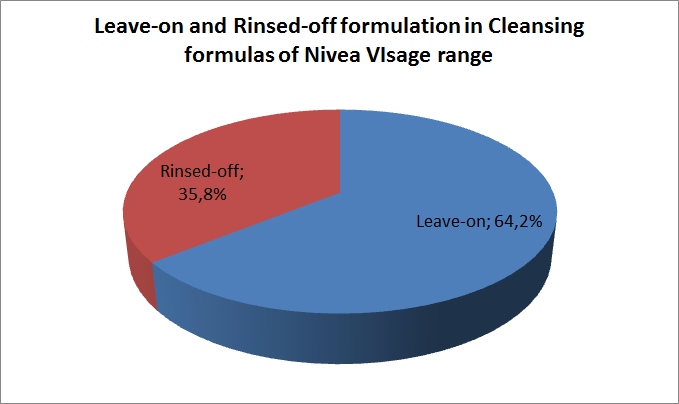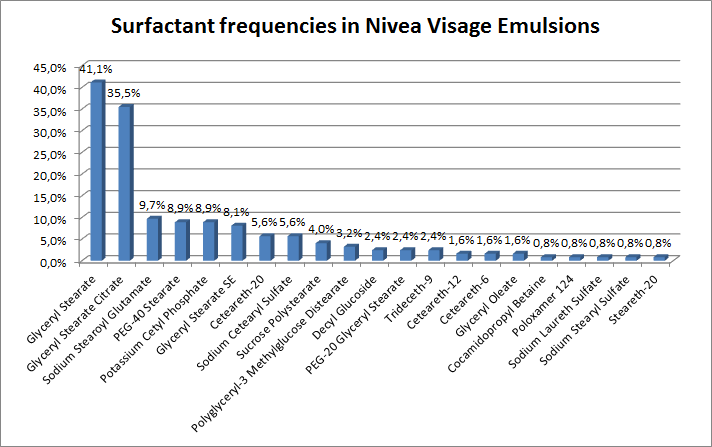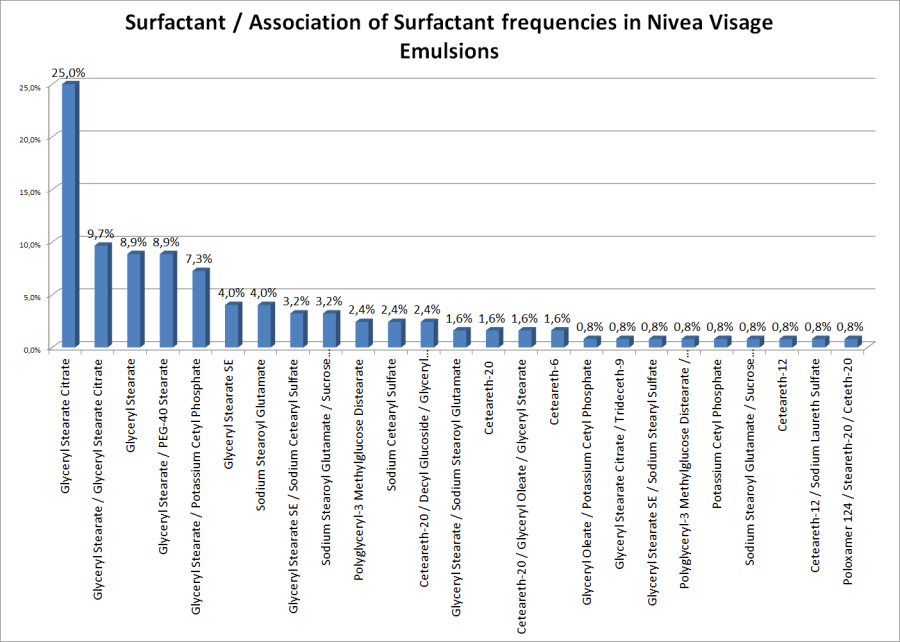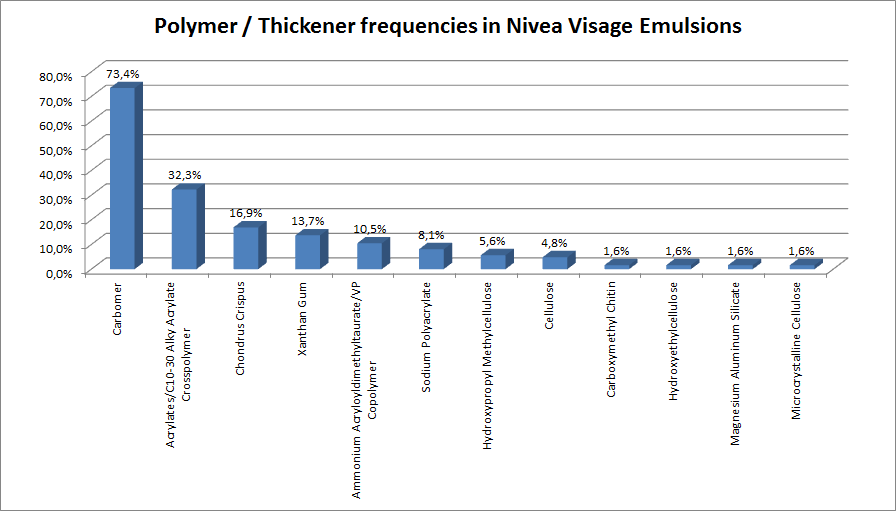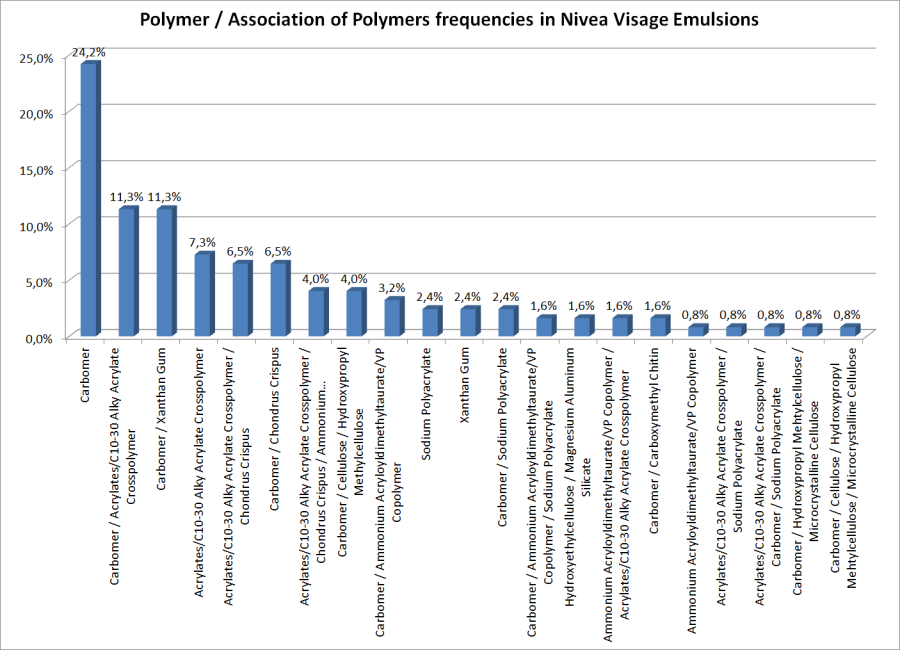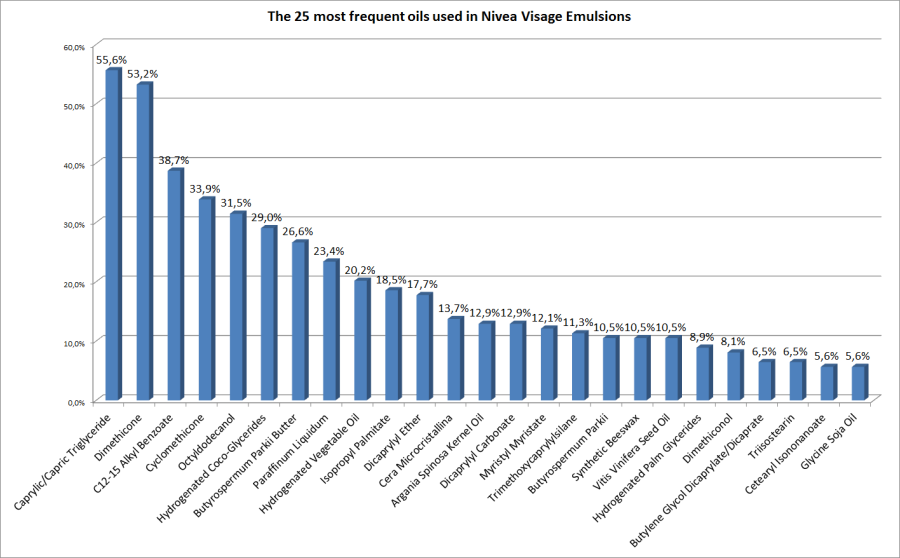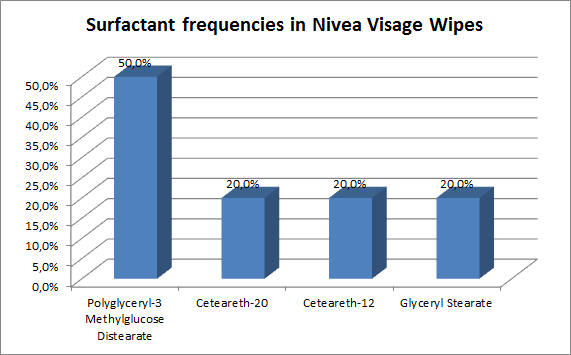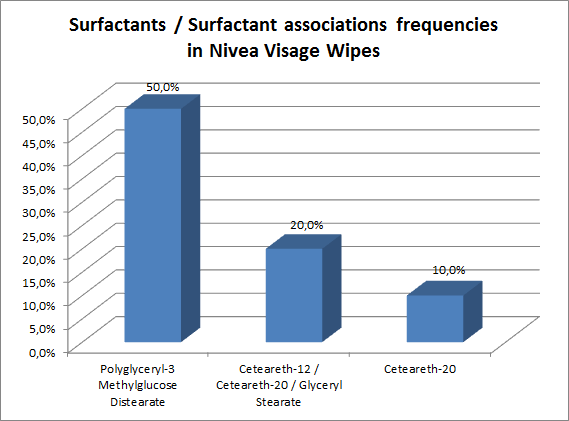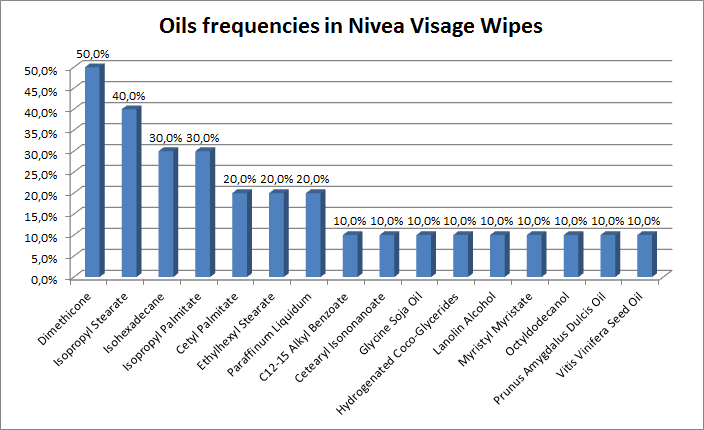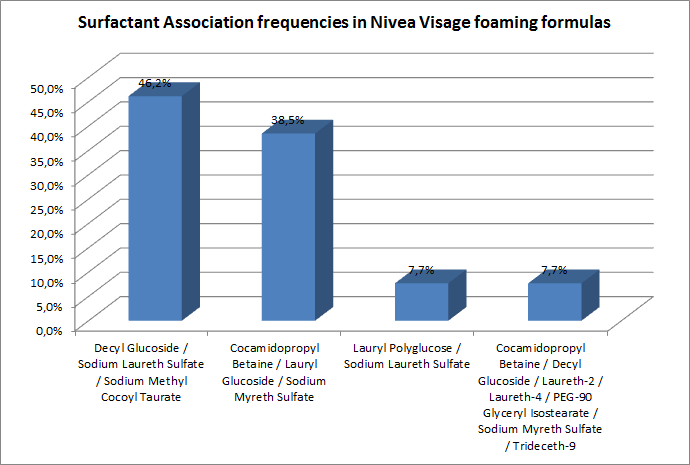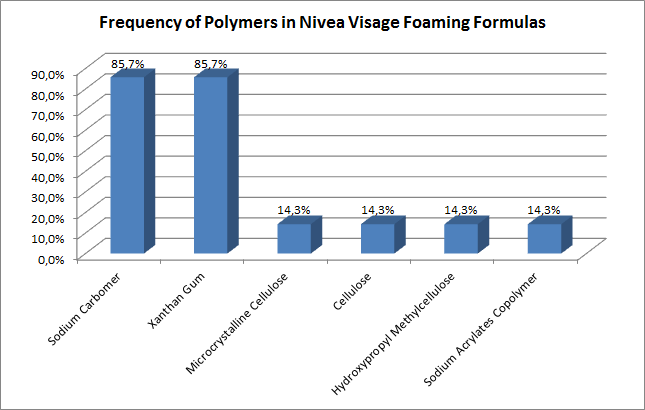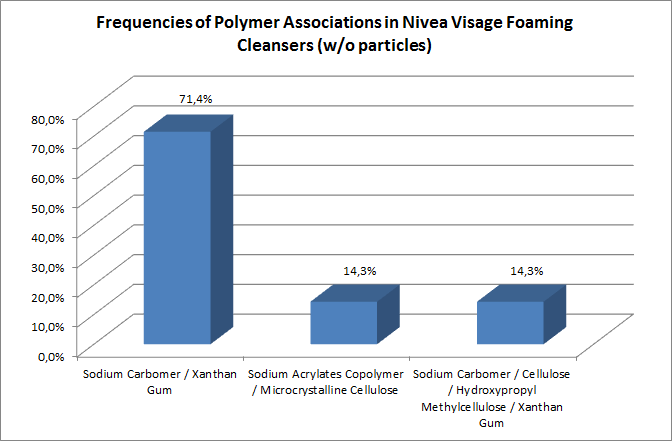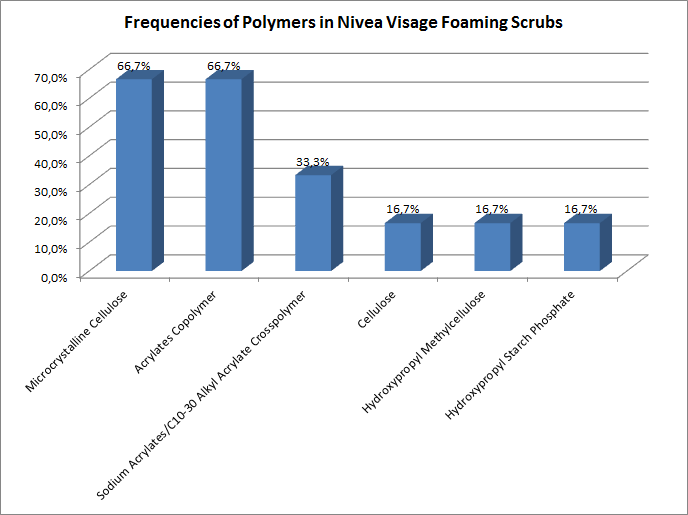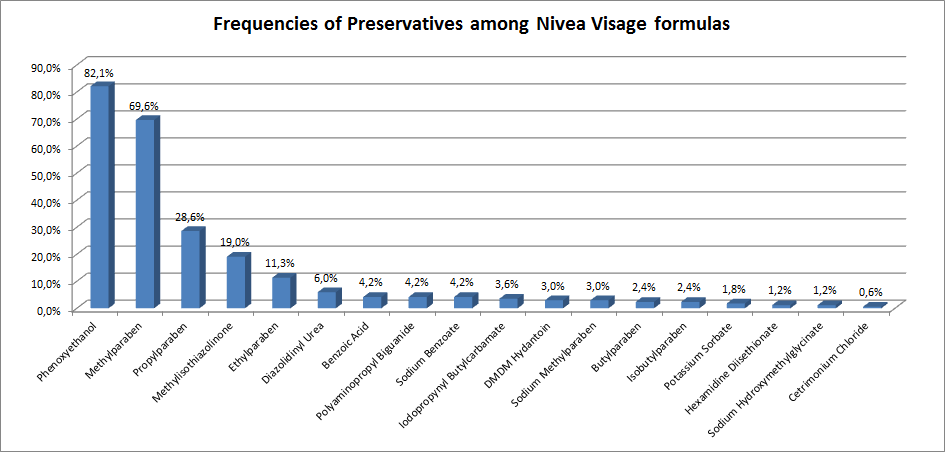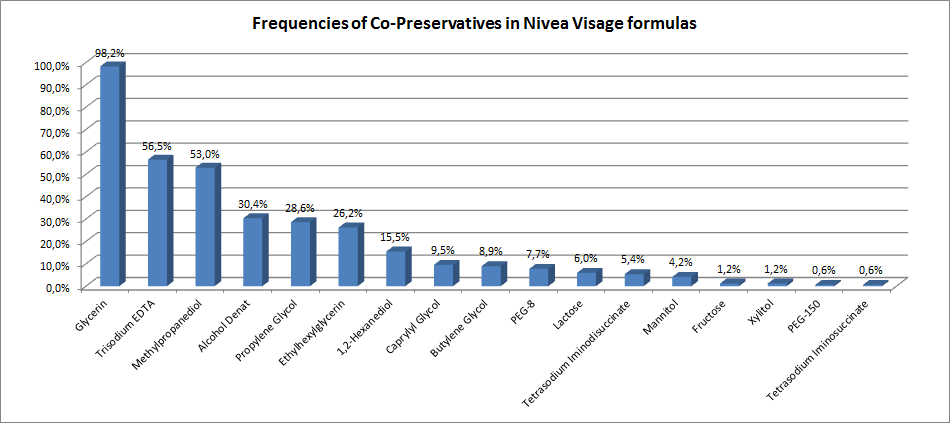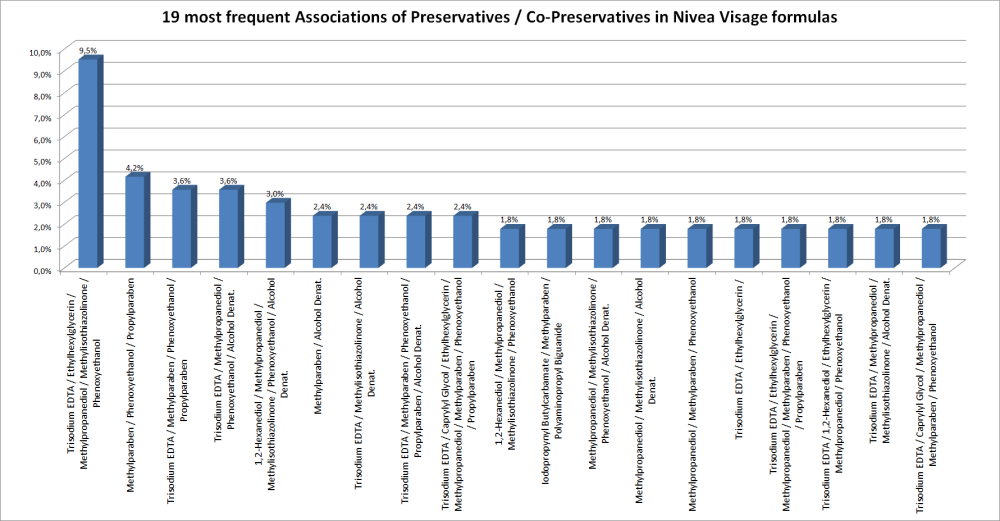This first part of the study is dedicated to the understanding of the formulation strategy used by Beiersdorf to design its Nivea Visage range.
Key learnings
Nivea Visage formulas are formulated with very classical technologies, mastered by Beiersdorf. The diversity of formula structures is quite limited, i.e. regarding emulsions where more than 40% use Glyceryl Stearate and more than 35% use Glyceryl Stearate Citrate as surfactant, and more than 70% use Carbomer as thickener.
The number of active ingredients is limited, and focused on “big” ingredients either already famous among consumers like Vitamins (more than 40% of the formulas studied contain Tocopheryl Acetate or Panthenol), or installed on a long term perspective like Ubiquinone (CoQ10) or Creatine.
Regarding preservative system, despite the attacks on Parabens, this family of preservatives is still commonly used in Nivea Visage formulas, with almost 70% containing Methylparaben, and 28% containing Propylparaben. However, new preservatives like Methylisothiazolinone, or several preservatives like Methylpropanediol or Ethylhexylglycerin are often used to complement the action of official preservatives.
Introduction / Study Process
This study of the Nivea Visage range is based on the more than 100 local websites of Nivea around the world, accessible from Nivea.com. Data on the formulas available in the Nivea Visage range were collected in May 2012. Among all the products identified, ingredient lists were available for 168 formulas. These ingredient lists were manipulated to extract data on the strategy of Beiersdorf to formulate the face care range of Nivea, presented below.
The following study of the Nivea Visage range is organized into three parts :
– Active ingredients
– Formula stuctures
– Preservative systems
Active ingredients
Nivea Visage is a mass market brand, with a medium price positioning. For active ingredients in Nivea Visage formulas, Beiersdorf strategy has always been to limit the number of active ingredients in its formula.
In this study, the following categories of ingredients are considered as active ingredients :
– Vegetal Extracts
– Synthetic Ingredients
– Vitamins
– UV Filters
– Animal Extracts
– Mineral Ingredients
– Microbiological Ingredients
Based on this definition, 84 different active ingredients are used in Nivea Visage formulas, shared among the 7 categories described above as follows :
The mean number of active ingredients / formula among the 168 Nivea Visage formula is 3,93. This should be compared to luxury brand formulas, but seems quite a low value.
The active ingredient frequencies (i.e. % of formula containing a given active ingredient) among the 168 Nivea Visage formulas are given in the following chart (for active ingredients present in more than 5% of the formulas studied) :
The two most frequent active ingredients are two vitamin-derivative, Tocopheryl Acetate followed by Panthenol, present in more than 40% of the formulas studied.
Far from those two ingredients, the next most frequent active ingredients are the following UV filters : Butylmethoxydibenzoylmethane, Titanium Dioxide, Octocrylene and Ethylhexyl Salicylate, present in 12% to 20% of the formulas studied.
Vegetal Extracts
This category of active ingredients is the most diversified, with 39 different ingredients. Their frequency among the 168 Nivea Visage formulas studied is given in the following chart :
Nelumbium Speciosum Extract is the transversal ingredient of the cleansing range. This range includes a lot of formulas regarding the other ranges, which could explain the first position of this active ingredient in this ranking.
Synthetic Ingredients
This family of active ingredients includes 12 ingredients. Their frequencies among the 168 Nivea Visage formulas studied are given in the following chart :
The most frequent active ingredient is Ubiquinone (Co-enzyme Q10).
Vitamins
This family of active ingredients includes 11 ingredients. Their frequency among the 168 Nivea Visage formulas studied are given in the following chart :
As discussed before, Tocopheryl Acetate and Panthenol are by far the most frequent vitamins in Nivea Visage formulas.
UV Filters
This family of active ingredients includes 11 ingredients. Their frequency among the 168 Nivea Visage formulas studied is given in the following chart :
The frequencies of association of UV filters is presented in the Graph below :
Animal Extracts
This category of active ingredients includes 6 ingredients. Their frequencies among the 168 Nivea Visage formulas studied are given in chart below :
Mineral Ingredients
This category of active ingredients includes 3 different ingredients. Their frequencies among the 168 Nivea Visage formulas studied is given in chart below :
Microbiological Ingredients
This category of active ingredients includes 2 ingredients. Their frequency among the 168 Nivea Visage formulas studied is given in chart below :
Formula structures
Classification of Nivea formulas
We have classified the 168 Nivea Visage formulas regarding several criteria :
– Which are cleansing products, which are care products ?
– Which are leave-on formulas, which are rinsed-off formulas ?
– What are the galenic technologies used ?
These different criterias can be crossed to extract some additional data on Nivea Visage range structure :
– Which type of formulas are used in Cleansing products between Leave-on and Rinsed-off formulations ?
– Which technologies are used in Cleansing products ?
– Which technologies are used in Care products ?
100% are Emulsions
Closer look to galenic technologies
The nature of the galenic technology of a formula is the consequence of its “skeleton”, i.e. the minimum group of ingredients necessary to make a formula with a given galenic technology. As an example, the “skeleton” of an emulsion is an association of surfactants and polymers, allowing the stabilization of the mixture of a oil phase and an aqueous phase.
For each group of galenic technologies used in Nivea Visage range, we are going to identify the most used “skeletons”.
Emulsion
Emulsion technology is the largest galenic technology used in Nivea Visage range, with 73.8% of the 168 formulas studied based on this technology. As said above, the characteristic ingredients or “skeleton” of an emulsion are its surfactants and its polymers / thickeners. We will also have a closer look to the oil phase compositions of the emulsions.
Surfactants
The frequencies of Surfactants in Nivea Visage emulsions are given in the graph below :
The most frequent surfactants by far used by Beiersdorf in its Nivea Visage products based on emulsion technology are Glyceryl Stearate (41.1% of emulsions) and Glyceryl Stearate Citrate (35.5% of emulsions)
Even if it can be used alone to prepare an emulsion, a surfactant is usually associated to one or more other surfactants.
The graph below presents the frequencies of Surfactants / Associations of surfactants in the emulsions of the Nivea Visage range :
The most frequent surfactant system used in Nivea Visage emulsions is the Glyceryl Stearate Citrate surfactant used alone (25% of emulsions), followed by three other systems based on Glyceryl Stearate :
– Glyceryl Stearate / Glyceryl Stearate Citrate (9.7% of emulsions)
– Glyceryl Stearate (8.9% of emulsions)
– Glyceryl Stearate / PEG-40 Stearate (8.9% of emulsions)
Polymers / Thickeners
In emulsions, polymers are used to stabilize and / or thicken the formulations. They are thus major actors of the structure of the formulas.
The frequencies of Polymers / Thickeners in Nivea Visage emulsions are given in the graph below :
73.4% of the Nivea Visage emulsions are based on Carbomer polymer (Carbomer, Sodium Carbomer or Potassium Carbomer in full ingredients lists).
In order to improve the stability or the skinfeel of a formula, polymers / thickeners are often associated. The most used polymers are used alone or in association with others. The graph below presents the frequencies of Polymers / Associations of polymers in the emulsions of the Nivea Visage range :
The three most frequent Polymers / Polymer associations are :
– Carbomer used alone (24.2% of emulsions)
– Carbomer associated with Acrylates/C10-30 Alkyl Acrylate Crosspolymer (11.3% of emulsions)
– Carbomer associated with Xanthan Gum (11.3% of emulsions)
Oil Phase compositions
An emulsion is a stable mixture of an aqueous phase and an oil phase. Oil phase has a major importance on the resulting skinfeel of an emulsion.
The frequencies of oils / fats in Nivea Visage emulsions are given in the graph below :
The two most frequent oils by far (more than 50% of Nivea Visage emulsions contain them) are Caprylic/Capric Triglyceride (a synthetic triglyceride with a skinfeel and nutritious properties close to those of natural oils) and Dimethicone (a non volatile linear silicone oil).
No specific association of oils is used more frequently than another.
Wipes
10 wipes products were identified among the 168 formulas of the Nivea Visage range. All of them are based on emulsion technologies. As done previously, we give below a closer look to surfactants and polymers / thickeners used in these products.
Surfactants
The frequencies of Surfactants in Nivea Visage emulsions are given in the graph below :
The graph below presents the frequencies of Surfactants / Associations of surfactants in the wipes of the Nivea Visage range :
Oil Phase compositions
The graph below present the frequencies of Oils in the wipes of the Nivea Visage range :
Foaming Cleansers and Foaming Scrubs
In a foaming cleanser, the key ingredients that determine the properties foaming properties are the surfactants.
7 foaming cleansers and 6 foaming scrubs have been identified among the 168 Nivea Visage formulas.
Surfactants
The frequencies of surfactants in Nivea Visage Foaming Cleansers and Foaming Scrubs is given in the graph below :
Among these surfactants, the most frequent in Nivea Visage Foaming Cleansers / Scrub Cleansers are Decyl Glucoside, a non-ionic foaming surfactant from the family of the APG (Alkyl Poly Glycoside), surfactants derived from sugar. This family of surfactant is becoming more and more popular for its natural origin, mildness for skin and biodegradability. Among the 11 surfactants identified in the Nivea Visage foaming formulas, two others are APG : Lauryl Polyglucose and Lauryl Glucoside.
As frequent in the Nivea Visage foaming formulas is the Sodium Laureth Surfate, a very classical anionic surfactant in foaming formulas, with a good foaming efficiency.
Some the surfactants used in the Nivea Visage Foaming formulas are not foaming surfactants, but more emulsifying surfactants : Laureth-2, Laureth-4, PEG-90 Glyceryl Isostearate and Trideceth-9. These surfactant are used in the same formula, a cleansing emulsion.
The frequencies of association of Surfactants in Foaming Cleansers & Foaming Scrub of the Nivea Visage range are given in the graph below :
The Nivea Visage foaming formulas are build on two main surfactant systems :
– Association of Decyl Glucoside / Sodium Laureth Sulfate / Sodium Methyl Cocoyl Taurate
– Association of Cocamidopropyl Betaine / Lauryl Gluside / Sodium Myreth Sulfate
Each of them associates an APG to a Sulfate anionic surfactant.
Polymers
Polymers are not required in foaming formulas which can have their intrinsic viscosity thanks to the micelles formed by foaming surfactant. However, thickening polymers can help to improve the viscosity and texture of the foaming formulas. However, they have most of the time a negative impact on the quality of the foam.
Here are presented separately the frequencies of surfactants in Foaming Cleansers and in Foaming Scrubs. Indeed, while they have only a thickening role in Foaming Cleansers, they are also used to suspend particles in Foaming Cleansers.
In Foaming Cleanser (without exfoliating particles) :
The frequencies of the associations of these polymers are shown in the graph below :
Most of the Foaming Cleansers of the Nivea Visage range are thickened with an association of Carbomer and Xanthan Gum
In Foaming Scrubs (i.e. Cleansers with particles) :
The most used polymer in Foaming Scrubs from the Nivea Visage range is Acrylates Copolymer (Lubrizol Carbopol Aqua SF1). It is associated with Microcrystalline Cellulose which would be more the polymer used in the suspended beads present in the formulas.
Scrubs
All the Foaming Scrubs of the Nivea Visage range contain Polyethylene beads as main exfoliating particles.
Preservative systems
Cosmetic formulas are protected by preservative molecules, listed in the international regulations. However, other ingredients are helpful even if not listed in the “official” preservatives, Ethanol (INCI Name : Alcohol or Alcohol Denat.), Polyols and Chelating agents.
The frequencies of preservative molecules in the 168 Nivea Visage formulas studied are shown below :
The 2 most frequent preservatives in Nivea Visage formulas are Phenoxyethanol and Methylparaben, present in more than 65% of formulas. Beiersdorf uses a wide range of preservatives : Parabens (Methyl-, Propyl-, Ethyl-, Sodium Methyl-, Butyl-, Isobutylparaben), Organic Acids (Benzoic Acid / Sodium Benzoate, Potassium Sorbac), Formaldehyde donors (Diazolidinyl Urea, DMDM Hydantoin), Halogenous (Iodopropynyl Butylcarbamate), Cationic (Polyaminopropyl Biguanide, Hexamidine Diisethionate, Cetrimonium Bromide), and uncommon molecules like Sodium Hydroxymethylglycinate. Methylisothiazolinone is also among the 4 most used preservatives in Nivea Visage range, present 19% of the formulas.
The frequencies of co-preservatives (Polyols, Chelating agents) are presented below :
Apart from Glycerin which is a very common glycol used mainly as a moisturizing agent with water-binding properties, Trisodium EDTA – a chelating agent – and Methylpropanediol – a diol known for its anti-bacterial properties – are present in more than half of the 168 Nivea Visage formulas studied.
Nivea uses also other diols / glycols with anti-bacterial activity : Ethylhexylglycerin, 1,2-Hexanediol and Caprylyl Glycol.
The graph below presents the 19 most frequent associations of Preservatives / Co-Preservatives in Nivea Visage formulas :
The most frequent association of Preservatives / Co-Preservatives, used in 16 of the 168 Nivea Visage formulas is made of 2 listed preservatives – Phenoxyethanol and Methylisothiazolinone – associated with a chelating agent – Trisodium EDTA – and two polyols : Ethylhexylglycerin and Methylpropanediol.
